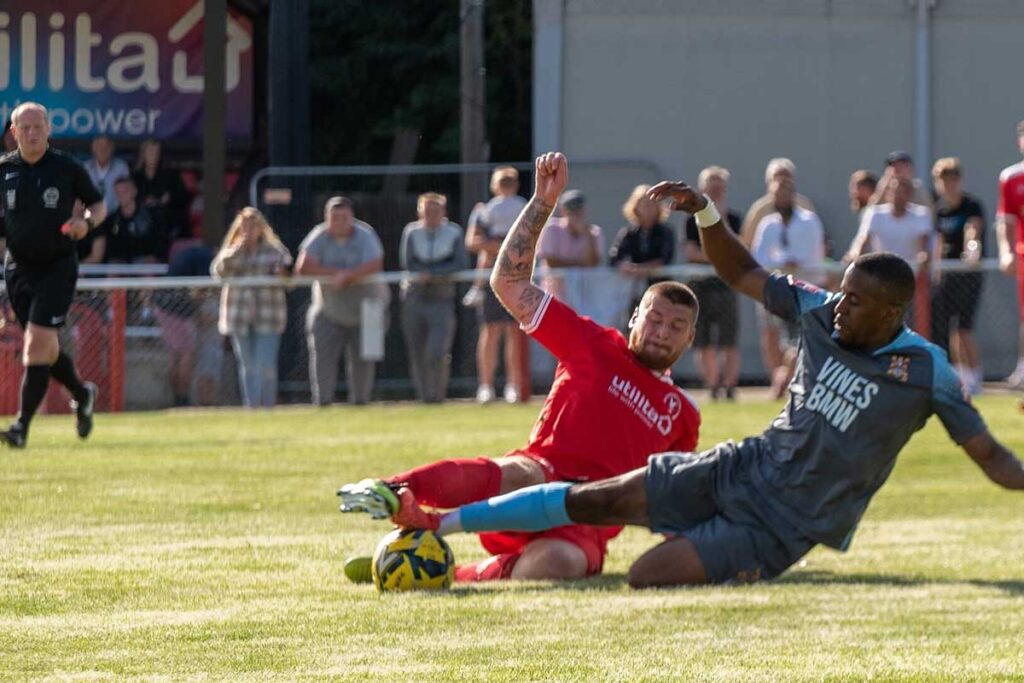Securing grant funding has become increasingly competitive in recent years, with more and more clubs and organisations needing additional funds.
Your funding bid is the first impression the potential funder will have of your organisation or club. It’s unlikely that they’ll be aware of the great work you have been doing. So it’s important to make sure you show how well managed your club / organisation is and how it can make a strong impact to their cause.
In this article, we’ll talk you through the process and give you actionable tips on how to best present your organisation within your funding bid. Discover how to stand out from the crowd, what evidence you need to include, and what to avoid.
We also spoke to our LoveFootball community ambassador, Wayne Harvey, and our LoveGymnastics community ambassador, Alex Row, who have both been through the process of successfully writing a funding bid.
Common reasons why applications are rejected
Before we dive into how to write a successful funding bid application, it’s important to identify which issues commonly cause a bid to be rejected.
Funding bids are often rejected due to the following:
- Asking for too much money
- Not matching the criteria of the fund
- Missing information
- Late application
- Boxes and required fields not completed
LoveGymnastics community ambassador, Alex Row, says: “Something that we often get as feedback is them not understanding the impact and finances of the club i.e we have too much money in the bank (even though these are restricted funds).”
What does a funding bid typically include?
Funding applications can vary slightly depending on the fund and criteria. However, they typically share common requirements like:
- A brief overview of the organisations’ background
- Project title
- Overview of the proposed project
- Why the grant is needed and how it will be used
- A clear delivery plan
- Outcomes and outputs
- Budget and where it will be spent
A four-step plan for writing a successful application
To maximise the chance of your funding bid being successful, we recommend following the four-step plan outlined below.
Step one – Contact the funder
Most funders are more than happy to chat with you prior to your application. Seize the opportunity to gain knowledge about the funders’ criteria, clarify any points you are unsure about and introduce yourself.
Creating a good relationship with the funder and building up a rapport is always a good idea. Take the time to ask them what is important to their cause and what a successful application may look like.
LoveFootball community ambassador, Wayne Harvey, says: “Whenever you are writing an application, you need to check if the provider of the grant has an advice page or guide to help you. If not, use the Sports England one. It is really good and tells you exactly what they need and should be used for every grant application”. View the Sports England guide here.
Step two – It’s all in the prep
Before you start writing your funding bid, make sure you have prepared properly. Put together a plan and outline of what your application is going to include. Assume that the funder knows nothing about your organisation / club, so describe it clearly. Explain who you are, what you do and link your shared passions and commitments.
Be prepared to make multiple drafts of your applications. Quite often bids will take a few drafts before they fall into place. Read through all the questions and criteria thoroughly and plan your response to each one. Applications are commonly unsuccessful because not all questions have been answered, so check your funding bid thoroughly in case anything is missing.
Wayne says: “My best advice is that it’s like a sales pitch – you need to tailor your pitch to what the grant wants, be it increased participation for women / girls, more kids, diversity, the older generation, elderly, community access, supporting mental health, or ethnicity, or people struggling financially.
“The application must clearly show how you will use the funds to achieve the goals of the grant. It must also show what actions you will undertake to achieve these goals, plus the club’s current position in this area and where you want the club to be after the grant and taking these specific actions.”
Step three – Time to put it into words
Now that you have carefully planned your answers to each section, it’s time to put your case together. We have a few words of wisdom to help get the creativity flowing and allow your club / organisation to stand out for all of the right reasons.
- Be positive about your organisation’s successes and achievements – be proud
- Clearly state the aims of the project and how you will achieve these with the help of the grant – get into the nitty-gritty
- Relate every section back to the needs and aims of the funder – tie all your answers into their core values and needs
- Give real-world examples of how your organisation helps the community. Talk about the impact it has had and will continue to do so with the help of the grant
- Use similar language to what the funder does. If they talk about sustainability or about specific mental health benefits, you need to as well
- Discuss in detail your budgets and how you are going to spend the fund. Be careful to make sure you’re realistic. You don’t want to overspend or under-cost
- Perfectly blend your passion with a business approach – give facts and evidence where necessary but don’t forget to use your personality
Wayne explains: “You pretty much have an introduction, the main application prospectus and a conclusion. Make it clear, easy to understand, and focus on the grant’s goals. Don’t forget to read the terms and conditions too!”
Alex adds: “We often look at different indexes, indicates of deprivation to help support our funds and also if there are any other case studies you could use to support your case.”
Step four – Before you send your application
It may be tempting to hit send as soon as you’re done writing your application, but don’t rush. Thoroughly check it and then check again before sending. If you can get another person to proofread your application, even better.
Consider the following before sending your application:
- Try and get as many letters of support from key groups, current / existing members and the members of the community as possible
- Send any additional information that the funder has requested. This could be proof of accounts or your constitution
- If you are referencing additional information within your application, use language such as ‘for more information please refer to attachment one’
- Make sure your format and presentation are clearly laid out and professional
- Give yourself plenty of time before the deadline to thoroughly proofread
- Keep a copy of the application for your records
- Apply using the method they request. This could be via post, email, or an online form
Top tip: There are lots of charities and companies out there that will check over your funding application for you to make sure you meet the criteria. Charity Fundraising LTD has a bid writing review service that can help make your application even more successful.
Simple writing tips to remember
Everyone has a specific way in which they write – our writing styles show our personalities. However, it’s important to make sure we blend professionalism with our personality to really stand out.
- Avoid any jargon or slang
- Write using clear concise sentences
- Use bullet points to break up complicated points
- Put some passion into your words
- Make sure you’re using facts, not opinions
- Keep within the word limit they have stated
Want to know more about the latest funding opportunities for your club? Head over to our article discussing 10 sports funding grants clubs can apply for in 2022.














